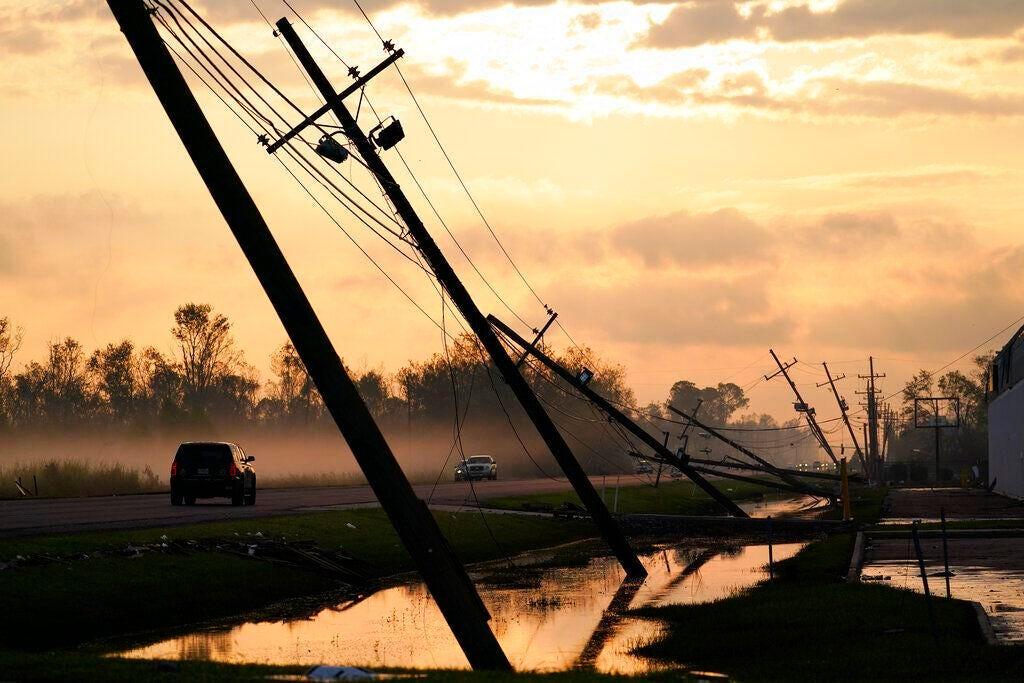Power Lines in Peril: The Impact of Climate Change and Enerza’s Solutions to the Rescue

Climate change is a major challenge facing the world today, affecting our environment, economy, and society across multiple dimensions. One vital sector encountering the repercussions is our electrical power grid, particularly the distribution network responsible for supplying electricity to residences and businesses. Escalating global temperatures and shifting weather patterns are contributing to the heightened frequency and severity of natural calamities like hurricanes, wildfires, and storms. These events frequently result in considerable harm to power transmission lines, leaving numerous individuals without access to electricity. Consequently, both governmental bodies and utility enterprises find themselves allocating escalating financial resources toward the reparation and enhancement of power grids, which have become more susceptible due to the impact of climate change. Statistics provided by the National Oceanic and Atmospheric Administration (NOAA) reveal that in 2020 alone, the United States encountered 22 instances of weather-related and climatic disasters, each incurring damages surpassing $1 billion. This trend extends globally, as evidenced by data from the United Nations Office for Disaster Risk Reduction (UNDRR), indicating that between 2000 and 2019, climate-induced natural disasters amounted to a cumulative cost of $2.97 trillion worldwide. A substantial majority of these losses, approximately 77%, emanated from weather-triggered disasters encompassing floods, droughts, and storms. The Global Commission on Adaptation forecasts an expenditure of up to $7.1 trillion by 2030 to address the ramifications of climate change.
A prominent outcome of climate change on power infrastructure is the heightened occurrence of extreme weather occurrences, which inflict damage upon power transmission lines and related electrical infrastructure. Illustratively, events like Hurricane Katrina in 2005 and Hurricane Sandy in 2012 resulted in widespread power outages, affecting millions of individuals. The escalating peril of wildfires, particularly within arid and hot regions, exacerbates the situation. Strong gusts of wind can cause power lines to break, while falling trees and branches exacerbate the destruction, prolonging the duration of power failures. The 2018 Paradise Fire in California, attributed to a malfunctioning power line, yielded numerous casualties and incurred billions of dollars in damages. This underscores the imperative of cultivating a robust and dependable power grid capable of withstanding the challenges posed by climate change.
In light of the impacts of climate change on power distribution, governments and utility companies are committing substantial financial allocations to enhance the efficiency of the power grid. As an illustration, the US Department of Energy directed $96 million in funding towards reinforcing the grid’s ability to withstand both natural disasters and cybersecurity risks during 2018. Additionally, a comparable endeavor was undertaken by the California Public Utilities Commission in 2019, as they endorsed a strategy entailing an investment of $30 billion over the ensuing ten years. This financial commitment is targeted at elevating the resilience of the state’s electricity grid, with a specific focus on strengthening its capacity to endure extreme weather events.
Moreover, climate change is affecting utility companies in other ways, like altering demand patterns. As temperatures rise, the use of air conditioning increases, straining power grids during peak hours. This can lead to power outages and higher costs for grid operators who must invest in additional generating capacity. Additionally, climate change can impact renewable energy sources such as wind and solar power, causing fluctuations in power generation due to changes in weather patterns. Such variations can complicate the task of balancing power supply and demand, potentially causing outages. The deterioration of infrastructure is also a concern, as rising temperatures and moisture levels can accelerate the decay of power lines and transformers, leading to more frequent maintenance and potential outages. Sea-level rise can even damage underground power cables and substations, exacerbating climate change’s impact on the power grid.
To address these issues, distribution grid operators are implementing strategies such as fortifying infrastructure, investing in energy storage systems, and improving demand response programs. For instance, they might install sturdier poles and transformers and bury power lines underground to enhance resistance to natural disasters. Energy storage systems, like battery storage, can aid in balancing power supply and demand and providing backup power during outages. Demand response programs incentivize customers to reduce energy use during peak hours. However, despite these investments, challenges remain in maintaining a dependable power grid in the face of climate change. The increasing frequency and severity of natural disasters can inflict damage on powerlines and infrastructure, and the costs of repairs and upgrades can result in higher electricity rates for consumers.
Given the growing concerns surrounding climate change, companies like ENERZA are stepping in to assist utility companies. Utilizing aggregated data, ENERZA offers utilities an accessible dashboard to monitor grid health, asset information, and vegetation data. The fleet of robots can autonomously traverse overhead distribution lines, comprehensively covering the grid without human intervention. ENERZA’s mission centers on achieving a sustainable future without power outages. By averting these outages, the technology can decrease the need for emergency repairs and maintenance, subsequently reducing the associated carbon footprint. Furthermore, ENERZA’s technology can help mitigate the impact of more frequent and severe weather events caused by climate change, leading to fewer power outages. Overall, ENERZA’s innovative approach has the potential to enhance the efficiency and environmental sustainability of the power grid, thus mitigating climate change’s effects on power lines.
In conclusion, climate change significantly impacts powerlines, causing damage and escalating the costs of repairs and maintenance. These consequences translate into power outages, increased maintenance expenses, and fluctuations in energy supply and demand. While governments and utility companies are investing heavily in enhancing grid resilience, challenges persist. As the effects of climate change worsen, prioritizing electric grid investment is crucial to ensure consistent electricity supply to communities globally. However, with appropriate strategies in place, grid operators can mitigate these effects and secure a more reliable and resilient electrical power grid for the future.
Sources:
https://www.ncdc.noaa.gov/billions/overview
https://gca.org/global-commission-on-adaptation/report
